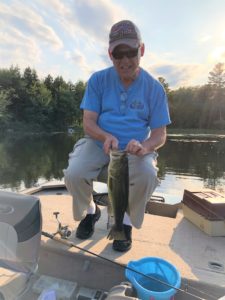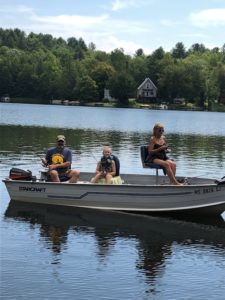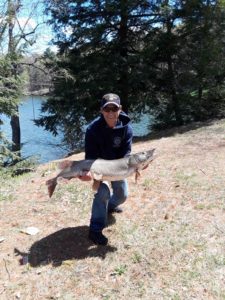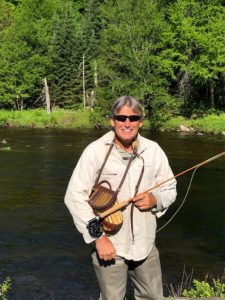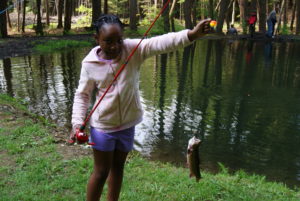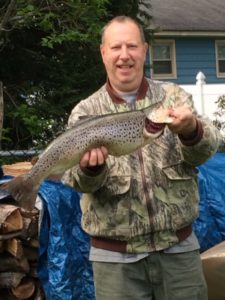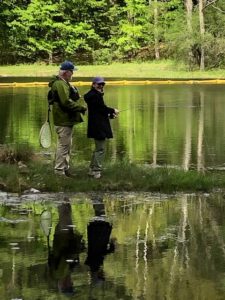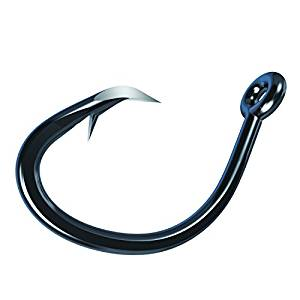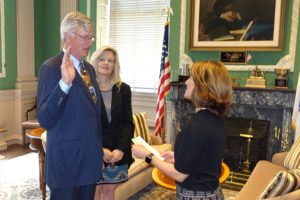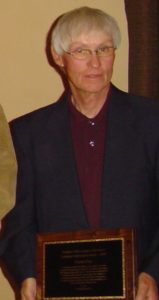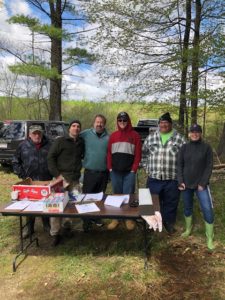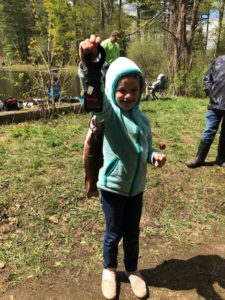Fishing, Gone?
Humans have a rapacious relationship with the world’s oceans, extracting immeasurable quantities of its inhabitants and resources, while simultaneously depositing unbound sums of pollution into it. That’s according to Sid Dobrin, author of Fishing, Gone? Saving the Ocean through Sportfishing. If we are to move toward sustainable practices, he writes, then we must first move toward ways of thinking about fish and fisheries beyond mere economic agendas. And there is one group in particular who could make an impact: saltwater anglers.
Recreational saltwater fishing is big business and big culture. The industry is one of the largest in the United States, but that has not translated into a cohesive effort, agenda, or ethic. Saltwater anglers, a diverse group with a range of motivations, do not belong to a single organization through which to galvanize significant voting or lobbying power toward conservation regulation. As a result, federal policymakers have traditionally focused on commercial harvesting interests.
Fishing, Gone? Is not about whether oceanic devastation, global warming and sea rise, we already know that, this book is about what is next.
Regional fisheries management have historically been dominated by commercial fishing interests and there are far more commercial fishing representatives than recreational fishing representatives on the Saltwater councils. This in spite of the fact that there are almost twice the number of jobs in some regions supported by recreational fishing than commercial fishing.
Dubbed the “most contemplative of pastimes,” recreational fishing provides a valuable perspective on how humans interact with saltwater environments. Fishing, Gone? builds on this tradition of reflection and opens up the saltwater sportfishing life as a method for thinking through the current status of marine fisheries and environment. Author Sid Dobrin calls on fellow saltwater anglers to reconsider their relationship to fishes and the ocean—the sport can no longer be only about the joy and freedom of fishing, but it must also be about living for the ocean, living with the ocean, and living through the ocean. It is about securing the opportunity to fish on while meeting the economic and environmental challenges that lie ahead.
For a while, the prevailing attitude was that ocean fisheries are inexhaustible and that nothing that we do would seriously affect the number of fish and any attempts to regulate these fisheries seems useless. If we are to move toward practices and promote ocean sustainability, then we must first move toward ways of thinking about fisheries beyond economic frames.
We understand and measure fish populations in terms of weight rather than numbers and we think about a population as a mass and not a collection of individual organisms. We don’t count populations of terrestrial game in weight but numbers. We refer to wild animals as “wildlife”, unless they inhabit the marine environment in which case we refer to such animals as simply seafood.
Most Americans have no idea that the fish they eat, which are harvested from waters they collectively own, have been deemed the private property of a few sea lords who sell those citizens own property back to them in frozen filets.
The recreation angler might be tempted to dismiss the catch-share fight by believing it is a problem for the commercial part of the allocation; we still have our recreational allocation. However, as catch-share owners gain stronger foothold with the NOAA councils, we see allocations leaning more heavily toward the commercial side of things.
In his book, Dobrin calls for a new ethic for saltwater anglers. This new ethic is necessary if recreational anglers, saltwater and freshwater, are to contribute to the protection of our communal waters and deeply treasured pastime. Some of the items of his manifesto are:
Saltwater recreational fishing is not a right but a privilege (an economic privilege) and with that privilege comes a responsibility, that to lend a communal angler voice to policy making.
Contemporary anglers’ ethic requires the accounting for the 3 primary facets of recreational fishing (a) the actions of the angler (b) the effects on the fish and (c) the impact on local and global ecosystems.
All anglers must adhere to the strictest care and empathy in harvest methods, only fish harvested are those to be eaten, used as bait to catch other fish or those to be used for scientific research. A catch and release mentality should be imbued.
We must think about fish and fisheries beyond economic frames. This includes understanding the role of every organism in local and global ecosystems. There is no such thing as trash fish.
The individual angler’s minimal harvest is compounded across the recreational angler population and can have a noticeable effect not just on fishery populations but on every aspect of human engagement with the ocean.
Lastly, Dobrin writes that fish populations are necessary in the global protein economy. Recreational anglers must support technological development of methods such as mariculture as an alternative to wild harvest while simultaneously finding a balance for the management of wild harvest that accounts for recreational needs and a reduced and monitored commercial harvest. All such ethics will inevitably be bound up in complex management policies as well as deep-seated philosophies of what it means to be a recreational saltwater angler.
In my opinion, this is a deep book (pardon the pun) and not one to have on your bed stand. It is well written with sufficient supporting data for Dobrin’s position and the reader must slow it down and absorb. He makes compelling arguments for his positions based upon sound data. I’m not sure the world is ready to implement his recommendations, but his data is difficult to refute. This book is an eye opener, perhaps ahead of its time and I suspect people will be talking about and referring to it for years to come. It may very well become required reading for ecology students.
If you are a serious salt water angler, you might want to pick up a copy.
The 263-page softcover book is priced at $30 and published by the Texas A&M University Press.
Congratulations Jr Campers
MassWildlife reports that over 100 kids aged 13 to 17, graduated on August 17 from the Massachusetts Junior Conservation Camp. A couple of them were from our area. They learned about outdoor skills like fishing, hunting, camping, archery, & firearm safety. They also learn forestry, soil conservation, aquatics, and wildlife management.
This is an excellent program. If you have a young outdoorsperson coming up the ranks, you might want to consider sending him/her to next year’s camp. For more information on that program click onto https://www.mass.gov/service-details/junior-conservation-camp.
Life Preservers
Don’t forget! From September 15 to May 15 Massachusetts regulations require that anyone using a canoe or kayak must wear a life preserver. Don’t sit on it, wear it!
Home from another fishing trip
I have been away on a flyfishing trip to the Yellowstone area of Montana and Wyoming with several local flyfishing buddies. By the time you read this column, I should have just gotten home earlier this morning (Good Lord willing). Last week’s and today’s columns were written prior to my leaving.
I am not sure what transpired around here during the period that I was away, so next week I will try to catch up on the news before writing about our trip. Hopefully we weren’t harassed by any black or grizzly bears, trampled down by buffalos, or dragged down an airplane aisle screaming and shouting.

